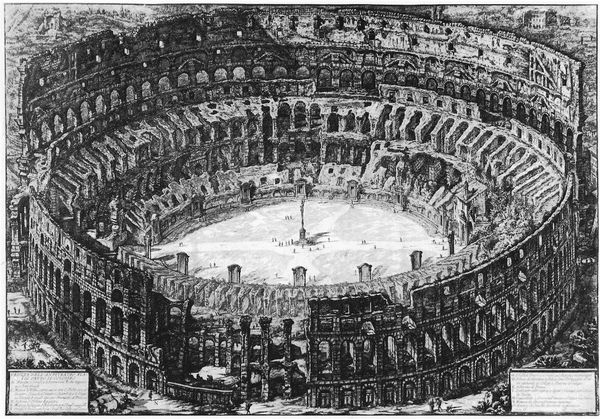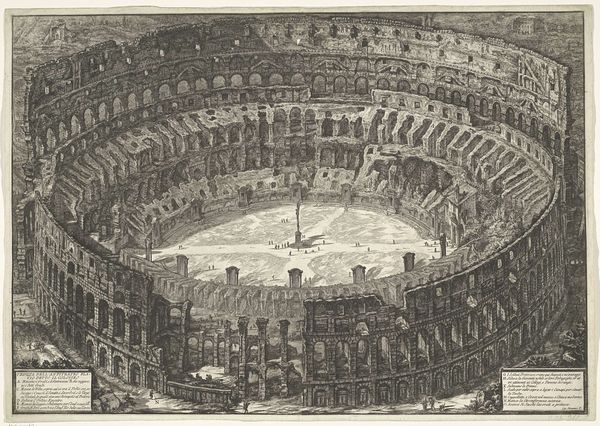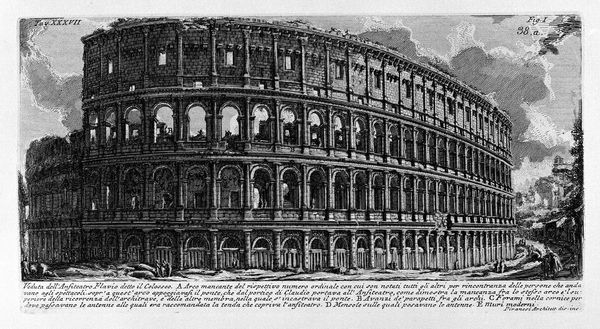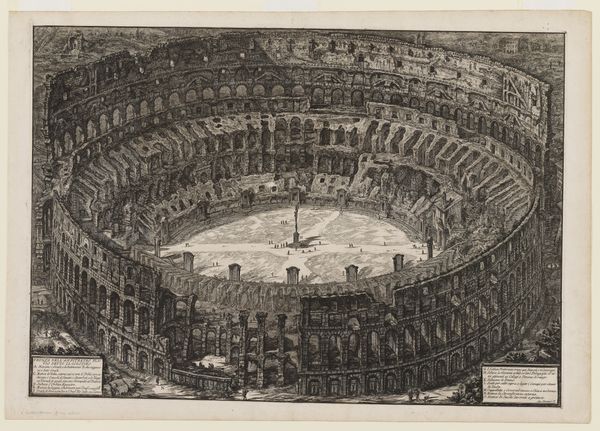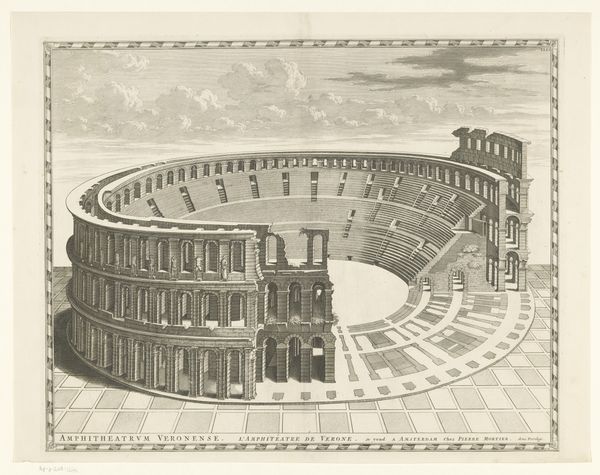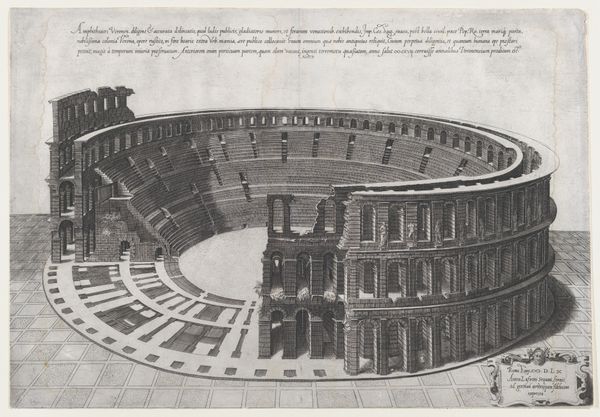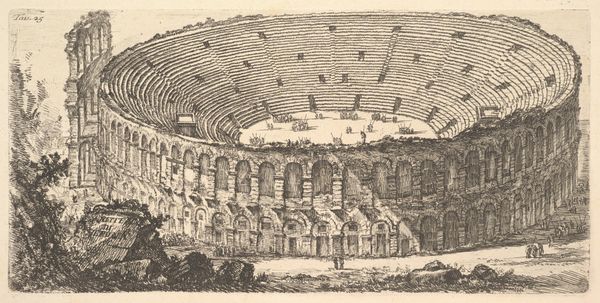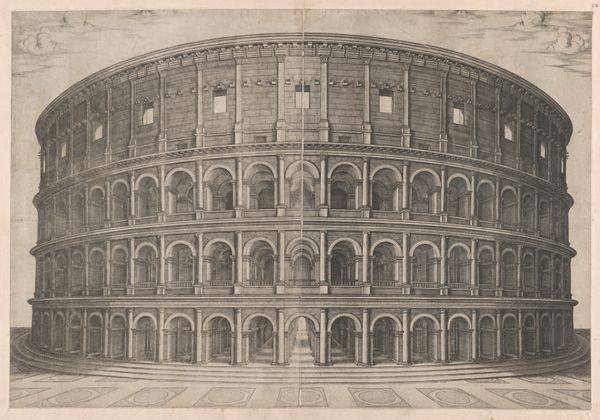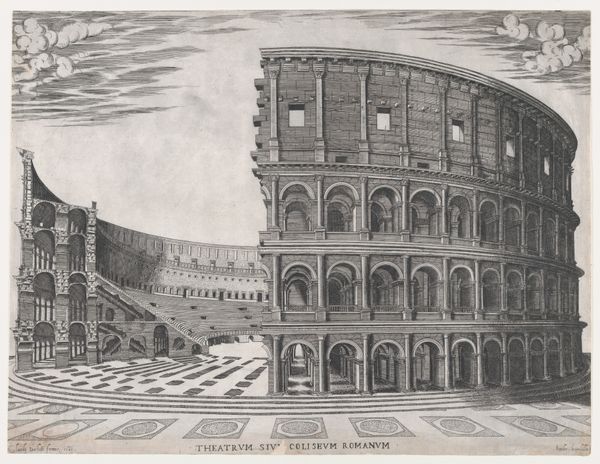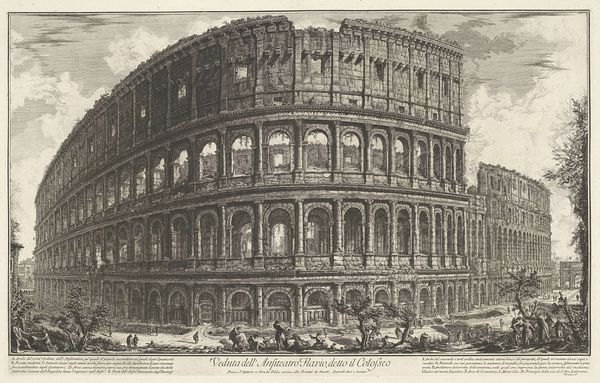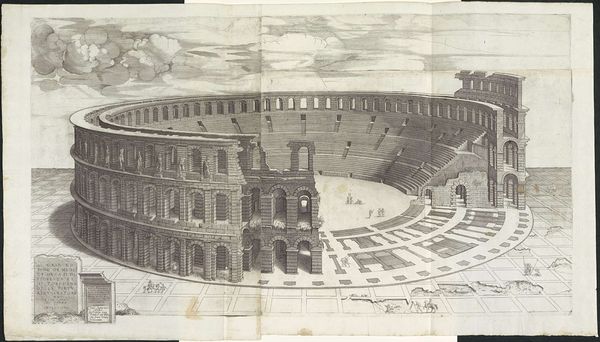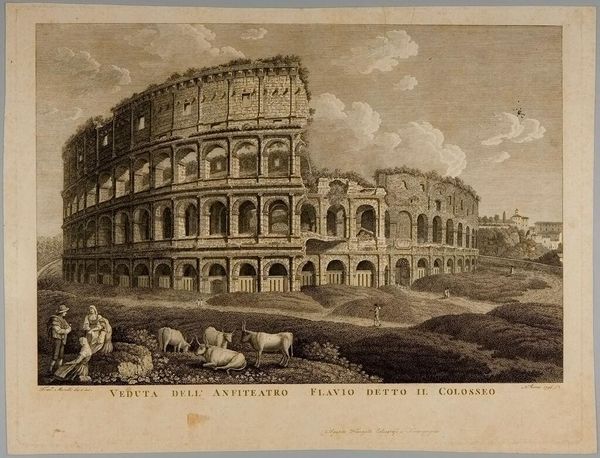
print, etching, photography, architecture
# print
#
etching
#
sculpture
#
landscape
#
perspective
#
photography
#
romanesque
#
ancient-mediterranean
#
column
#
black and white
#
cityscape
#
architecture
Copyright: Public domain
Curator: Here we have Giovanni Battista Piranesi's "View of the Flavian Amphitheatre, called the Coliseum (a bird)," an etching. It's really a spectacular example of his architectural prints. Editor: Yes, it’s quite striking! My first thought is just how incredibly dark and cavernous it appears. The sheer density of line work really emphasizes the Colosseum's decay, doesn’t it? Almost feels apocalyptic. Curator: Indeed. Consider that Piranesi was deeply invested in representing the physicality of Roman ruins. The process of etching—the biting of the metal plate with acid—allowed for a remarkable level of detail in capturing the rough textures of the stone. It really shows how material transformation mirrors the Colosseum’s own transition. Editor: That makes me think about the exploitation required to construct such a massive structure. The materials were quarried and transported through immense human labor. Then think of the labor of the gladiators within those walls—often enslaved people forced into deadly performances for the entertainment of Roman citizens. It's a legacy of oppression etched in stone. Curator: Precisely, it's essential to recognize how these prints, while aesthetically powerful, can be read as documents of labor, both forced and skilled. And the Colosseum as the theatre for so many things. The circulation of prints themselves then adds to the material narrative of Piranesi’s own workshop, and the consumption habits of the Grand Tourists. Editor: Looking at the crowd gathered at the base reminds me of contemporary discussions around tourism and its impact on historical sites. Do we engage respectfully, or do we contribute to a cycle of commodification that further erodes the past? How can we be better visitors to difficult sites? Curator: Those are vital questions. I'd suggest also considering the paper itself as a commodity. These prints were bought, sold, and circulated, contributing to a burgeoning market for antiquities and the representation of Rome as a desirable location. Editor: Right, understanding the life of these images beyond their initial creation lets us better appreciate their evolving social and political roles. Thanks! Curator: A vital addition, thanks! I am left feeling more interested in thinking about labor when considering his legacy now.
Comments
No comments
Be the first to comment and join the conversation on the ultimate creative platform.
